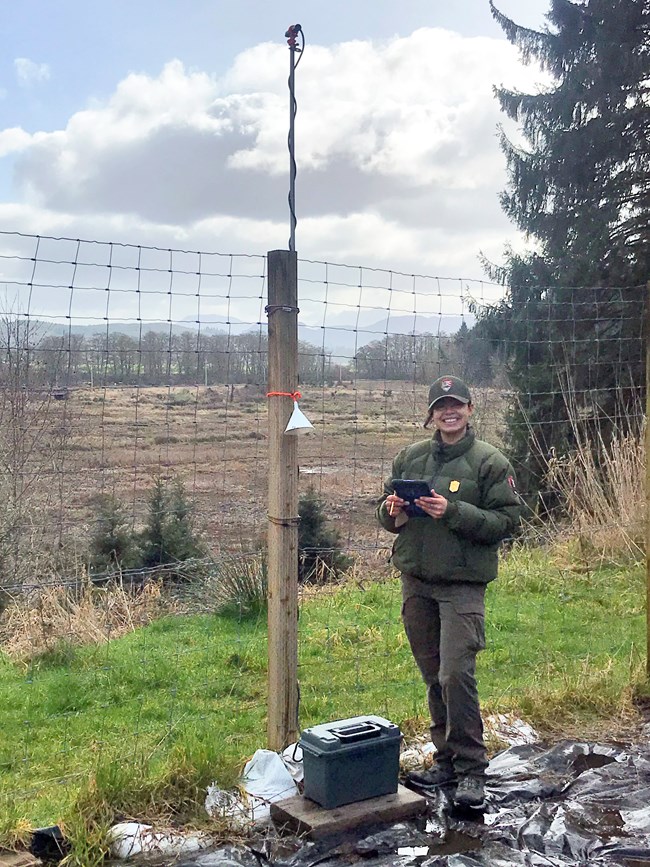Last updated: March 16, 2021
Article
The Northwestern Bat Hub: Banding Together for Bat Monitoring Across the West

NPS / Tara Chestnut
The first detection of white-nose syndrome (WNS) in the American West in 2016 highlighted an urgent need to better understand the distribution and ecology of around twenty species of bats in Western states. Bat diversity can be high in parks, especially in the Southwest. Exceptional highlights include the 21 species of bats confirmed in Big Bend National Park, but Parashant National Monument and Yosemite National Park are among several that host over 15 species.
In response to the growing recognition that we needed more and better data on our park bats, ecologists in several parks and Inventory & Monitoring Networks joined with the US Geological Survey, universities, state agencies, and other federal land management agencies to implement the North American Bat Monitoring Program (NABat) to parks and neighboring lands across the West. To centralize coordination efforts, the Northwestern Bat Hub was established on the Oregon State University-Cascades campus. The hub concept arose to efficiently identify bat species from the large volume of recorded bat calls that were accumulating during acoustic surveys, and to coordinate the monitoring and other conservation efforts among the National Park Service and its partners.
The Northwestern Bat Hub today is a catalyst for collaborations across the North Coast & Cascades, Upper Columbia Basin, Klamath, and Mojave Networks. The success of the Northwestern Bat Hub has inspired continent-wide uptake of the hub concept to facilitate regional collaborations for NABat and bat conservation more broadly. Several new bat hubs have been established in the Southwest, Midwest, and mid-Atlantic regions of the country. Canada also is pursuing the approach for its engagement with NABat.

*Due to concerns that humans could spread the virus that causes COVID-19 to bats or other wildlife in North America, biologists have been avoiding or reducing activities that involve handling bats during the coronavirus pandemic. They've also been taking additional safety measures, such as wearing masks, when working closely with wild animals. For more information, visit the Centers for Disease Control COVID-19 wildlife webpage.
Heidi McMullin
This new capacity for broad-scale and highly-collaborative bat monitoring is giving much-needed science support and yielding new discoveries at local, regional, and continental scales. Major outcomes to date from Western parks include:
-
Leading-edge detections of WNS and the fungus that causes it in places like Mount Rainier National Park;
-
Testing of the impacts of forest fire fuels reductions on forest-dependent bats in Crater Lake National Park;
-
Explorations of Townsend’s big-eared bat summer pup-rearing and winter hibernation in lava tubes of Craters of the Moon National Monument and Preserve;
-
Statistical estimation of regional population trends in at-risk species such as the hoary bat; and
-
Contribution of data from all parks to range-wide assessments for US Fish and Wildlife Service species status reviews.
When objectives differ across conservation and management scales, NABat’s design can satisfy local information needs while providing data to species status at regional and continental scales, thus achieving savings in cost for conservation monitoring.
